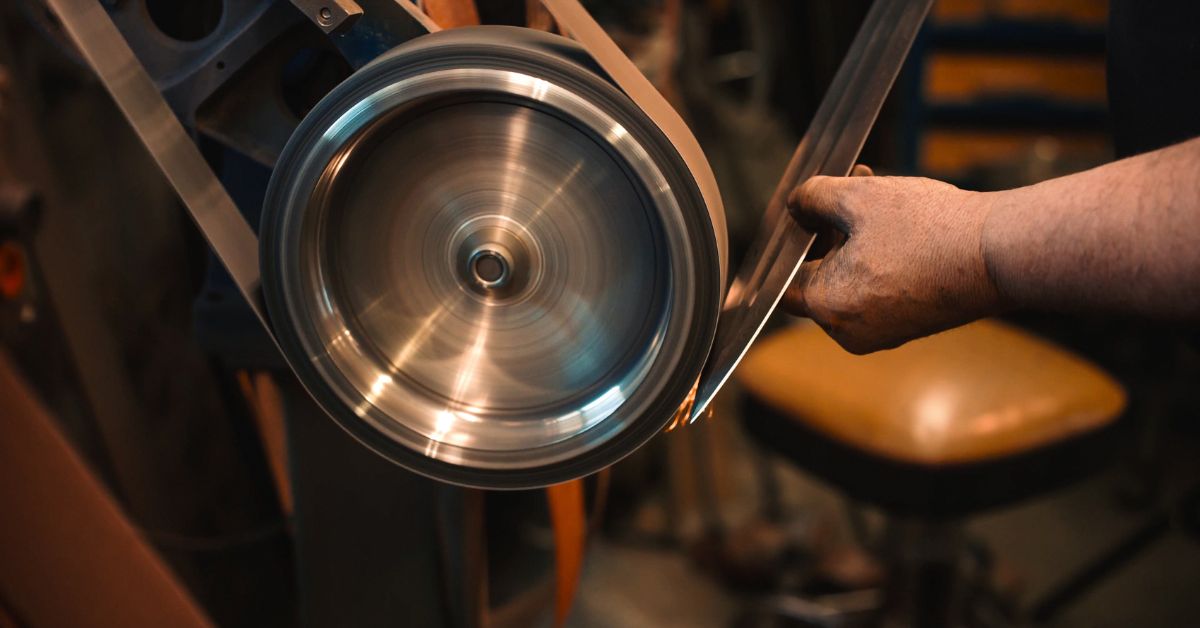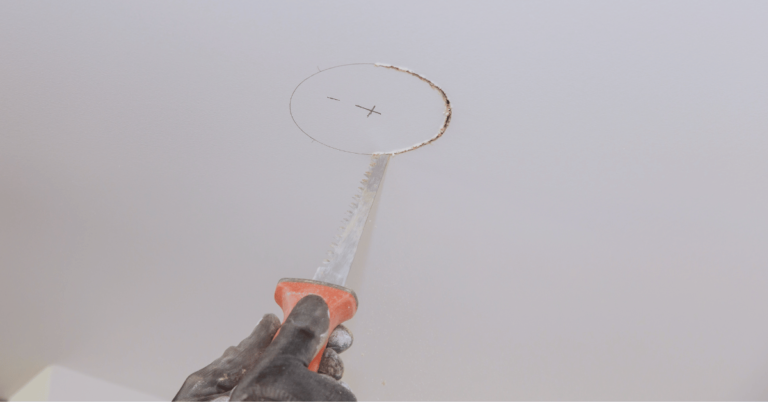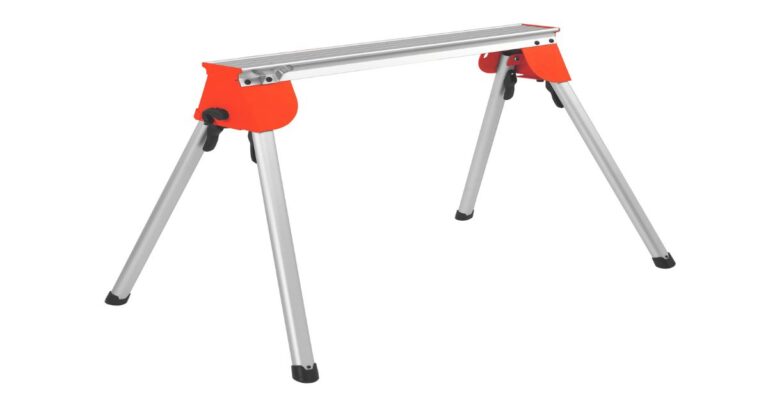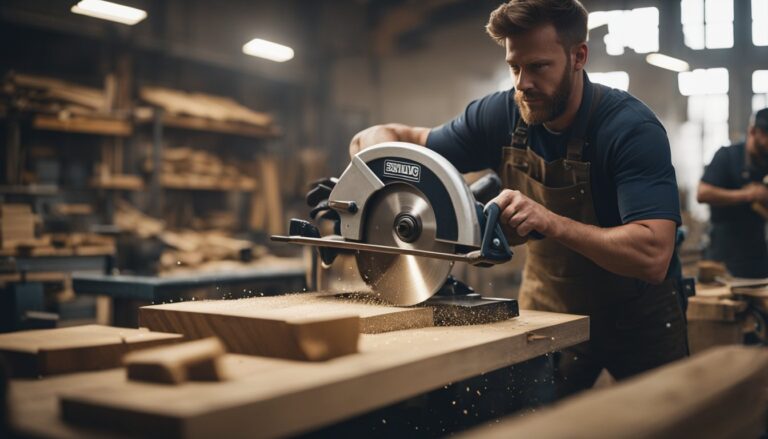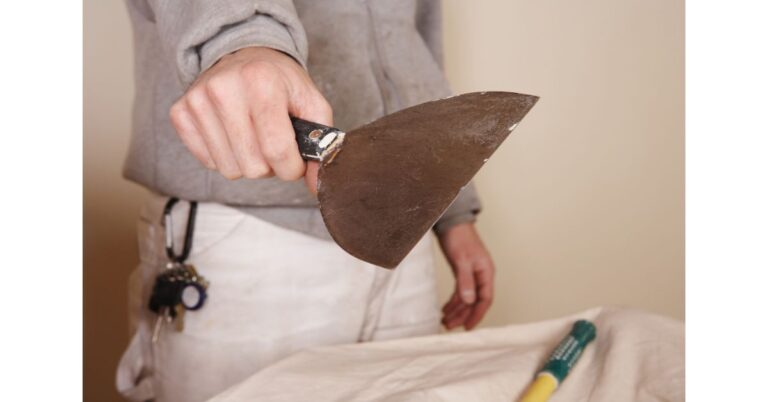Smooth and Shiny: Belt Sanders for Impeccable Metal Finishing
In metalworking, achieving a smooth and shiny finish is often crucial in producing high-quality products. Belt sanders have become an indispensable tool for flawless metal finishing. These versatile machines can significantly reduce the labour and time required to make a refined final product.
We all know metal finishing involves grinding, sanding, and polishing to achieve the desired surface finish. Belt sanders play a significant role in this process by providing consistent and efficient results. These machines utilize abrasive belts that come in various grit sizes tailored to meet the specific needs of our projects.
Moreover, proper technique and appropriate selection of belt grits contribute to achieving that perfect finish. Over time, we have discovered that by mastering the use of belt sanders, we can drastically improve our metalwork’s aesthetic and functional quality.
The Basics of Metal Finishing
Understanding the Finishing Process
In the world of metalworking, finishing is an essential step that we consistently deal with. It involves using a variety of processes and tools to improve the surface quality of metal products. Our primary focus in this article is using belt sanders to achieve a flawless metal finish.
Metal finishing removes imperfections like burrs, scratches, and other uneven areas to create a smooth, polished surface. Belt sanders, widely known for their versatility and efficiency, are one of our go-to tools for this. Equipped with abrasive belts, these machines help grind down rough surfaces and create a finely honed finish.
Importance of Metal Finishing
Perfecting the surface finish of metals is crucial for several reasons:
- Aesthetics: A smooth and shiny surface enhances the visual appeal of the final product.
- Performance enhancement: Reducing surface imperfections increases metal parts’ overall performance and lifespan.
- Corrosion resistance: A well-finished surface is less likely to corrode due to reduced surface area where corrosion can form.
- Reduced rework and scrap: Achieving a better finish reduces the need for rework and minimizes waste in the manufacturing process.
By investing time and effort into metal finishing, we significantly improve the quality and functionality of our products.
Common Applications
Metal finishing is an essential process in a wide variety of industries, including:
- Automotive: Highly polished and finished metal components contribute to vehicles’ efficiency, functionality, and appearance.
- Aerospace: High-quality surface finishes ensure durability and reliability in aerospace components subjected to extreme conditions.
- Manufacturing: Metal finishing enhances the performance of tools, machinery, and structures made from iron and other metals.
- Welding: By finishing welds, we remove excess material, creating smoother, stronger joints that are more visually appealing.
To summarize, belt sanders offer an effective solution for achieving smooth and shiny metal finishes. By improving the surface quality of our products, we can enhance their performance, aesthetics, and corrosion resistance across various industries.
Essential Tools and Equipment
Belt Sanders
Belt sanders are our go-to for quick and efficient metal finishing. These handheld power tools use continuous abrasive belts to smooth rough surfaces and remove burrs or oxidation. We recommend choosing one with variable speed settings for maximum control and versatility. To ensure safety while operating a belt sander, wear personal protective equipment, such as a mask and gloves.
Orbital Sanders
For more delicate metal finishing tasks, we opt for orbital sanders. These power tools utilize a round disc of abrasive paper, which moves in an orbital motion, ensuring a swirl-free finish. Like belt sanders, they also come in variable speed options, and wearing proper personal protective equipment is essential.
Angle Grinders
Angle grinders are versatile power tools and can be used for various metal finishing applications. They work by spinning a disc or wheel at high speeds, producing efficient material removal. To achieve a smooth and shiny metal surface, we use flap discs, which are layered, abrasive-coated flaps attached to a backing plate. Angle grinders require proper handling and personal protective equipment to prevent injury.
Other Relevant Tools
Alongside the main tools – belt sanders, orbital sanders, and angle grinders – we employ additional equipment to achieve flawless metal finishes. Some of these include:
- Files: For precise, manual metal shaping and deburring.
- Polishing compounds: For an extra shine after the initial sanding and grinding process.
- Wire brushes: To remove rust or oxidation before sanding or grinding.
- Personal Protective Equipment (PPE): Safety glasses, masks, and gloves to protect against dust and debris.
We can achieve smooth, shiny metal surfaces tailored to specific needs and projects by utilizing these tools and equipment.
Selecting and Using Abrasives
Grits and Grain Types
When working with metal finishing, it’s essential to understand the different grits and grain types of abrasives. Grits determine the coarseness or smoothness of an abrasive, while grain types affect performance and lifespan.
Finer grits result in a smoother finish, whereas coarser grits remove material faster. It’s essential to start with coarser grits to remove surface imperfections quickly and gradually progress to finer grits to achieve the desired level of smoothness. For instance:
- Coarse grits (40-60): Ideal for removing heavy material and rough shaping.
- Medium grits (80-120): Suitable for general-purpose sanding and moderate surface smoothing.
- Fine grits (180-240): Perfect for achieving fine finishes and surface preparation.
Sandpaper Selection
Choosing the correct sandpaper grit and type is crucial to achieving a flawless metal finish. To ensure the best results, use the following sandpaper selection guidelines:
- Select the sandpaper grit: Begin with coarse grit to remove the imperfections quickly, then move to medium and fine grit to refine the surface finish.
- Please choose an appropriate backing: Sandpaper backings, such as paper, cloth, and film, have different properties that determine their strength, flexibility, and durability.
- Pick a suitable grain type: Different grain types, like aluminium oxide and ceramic, offer specific benefits in terms of performance, lifespan, and cost.
Ceramic and Aluminum Oxide Abrasives
Ceramic and aluminium oxide abrasives are among the most popular abrasive options for metal finishing. Each has its advantages, depending on your needs and budget:
- Ceramic abrasives: Known for their durability and aggressive cutting action, they last longer and work faster than conventional abrasives. They’re well-suited for hard metals and high-pressure applications.
- Aluminium oxide abrasives: Offering a more affordable option, aluminium oxide abrasives deliver consistent performance and have a good balance of cutting speed and lifespan. They work well on various materials, including metal, wood, and plastic.
Understanding grits, grain types, and abrasive options like ceramic and aluminium oxide will help you select the appropriate abrasives for achieving a smooth and shiny metal finish with belt sanders.
Preparation and Techniques
Cleaning and Degreasing
Before we begin the metal finishing process, cleaning and degreasing the metal surfaces is essential. This ensures a contaminant-free surface for better paint adhesion and prevents damage or corrosion. We typically use a degreasing agent designed for metal, following the manufacturer’s instructions. After applying the agent, we scrub the surface using a soft-bristle brush to remove dirt, grease, and grime.
Handling Edges and Flat Surfaces
When working on edges and flat surfaces, we take special care to avoid damaging the metal. We use a flap disc or hand file for edges to smooth and refinish the area. This removes any sharp burrs and helps create a consistent finish. We employ a palm sander or other suitable sanding tool for flat surfaces to ensure an even and smooth surface. Power sanders are highly recommended for larger surfaces as they save time and effort while providing better results.
Fine and Coarse Sanding Techniques
The finishing process typically involves two stages: coarse sanding and fine sanding. Rough sanding is used primarily to remove material and create a directional finish. We select an appropriate grit size based on the desired visual finish and level of material removal.
Coarse Sanding Fine Sanding
Material Removal Ultra-Smooth Surface
Directional Finish Higher-Quality Finish
Fine sanding is used to create an ultra-smooth surface texture. We switch to finer grits during this stage. We may transition from a power sander to a palm sander or even hand-sanding, depending on the desired finish level—using finer grits results in a higher-quality finish, ideal for applications where appearance is critical.
It’s essential to avoid common mistakes during the finishing process. One mistake is applying too much pressure while sanding, resulting in gouges and an uneven surface finish. Proper training and experience can help prevent such errors, ensuring a successful and flawless metal finishing process.
Safety and Precautions
Proper Equipment Handling
When working with belt sanders, it is crucial to handle the equipment properly to prevent accidents. Always make sure the device is turned off before plugging it in. Hold the sander securely with both hands and be aware of the power switch’s location, so it can be turned off immediately if necessary. We also recommend reading the manufacturer’s instructions and practising with the sander before attempting any serious work.
Personal Protective Gear
Ensuring your safety should be a top priority. Essential personal protective equipment (PPE) includes:
- Safety goggles protect your eyes from flying debris or dust during the sanding process.
- Dust mask or respirator: Inhalation of metallic and abrasive dust may pose health hazards. Wearing a mask reduces the risk significantly.
- Ear protection: Prolonged exposure to the high noise levels of belt sanders may damage hearing. Use good-quality earmuffs or earplugs to protect your hearing.
- Gloves: While not always necessary, gloves can offer additional grip and protection for your hands against vibrations or abrasive materials.
Our selection of recommended PPE is as follows:
Personal Protective Equipment Recommended Item
Safety goggles Impact-resistant safety goggles
Dust mask/respirator N95-rated mask or better
Ear protection Noise-reduction earmuffs/plugs
Gloves Work gloves with added grip
Proper Work Environment
Establishing a suitable work environment is necessary for safe and efficient metal finishing. The area should be well-ventilated, as inadequate airflow could exacerbate health risks associated with dust and fumes. Additionally, keep your workspace clean and clutter-free to minimize the chances of accidents. Use clamps or other securing tools to hold your material in place during sanding. This prevents unexpected movement and helps maintain a consistent surface finish.
Special Considerations and Challenges
Powder Coating and Painting
We face several challenges in achieving a flawless finish when working with powder coating and painting. We must ensure the surface is contamination-free, including cutting oils, dust, and other foreign particles. Using the proper sanding method can help us achieve this.
- Make sure the sandpaper grit is appropriate for the material and finish desired
- Use a higher grit for a smoother, mirror finish
- Remove all surface imperfections before coating or painting to avoid rework or scrap
Working with Specific Metal Types
Different metals present unique challenges when sanding and finishing. For example, iron and steel can rust quickly, so using suitable additives and treatments is essential. On the other hand, aluminium and other non-ferrous metals are more sensitive to heat; therefore, using sulphur or chlorine-free cutting fluids is crucial. Here are some general considerations:
- Choose the correct sanding belt material and grit size for the type of metal being finished
- Adjust the belt speed and pressure based on the metal’s hardness and heat sensitivity
- Work in well-ventilated areas and wear appropriate safety gear
Refinishing and Repair
Refinishing and repairing metal surfaces, such as furniture or objects, requires finesse and attention to detail. We must be cautious when removing old paint, as any excess force can damage the underlying material. Welding can sometimes leave behind surface imperfections like excessive bluing or discolouration. Here are some recommendations:
- Use finer grits for sanding before reapplying paint or coatings
- Use wire brushes for cleaning and prepping surfaces before sanding
- Refinish metal surfaces immediately after filing to minimize exposure to contaminants

